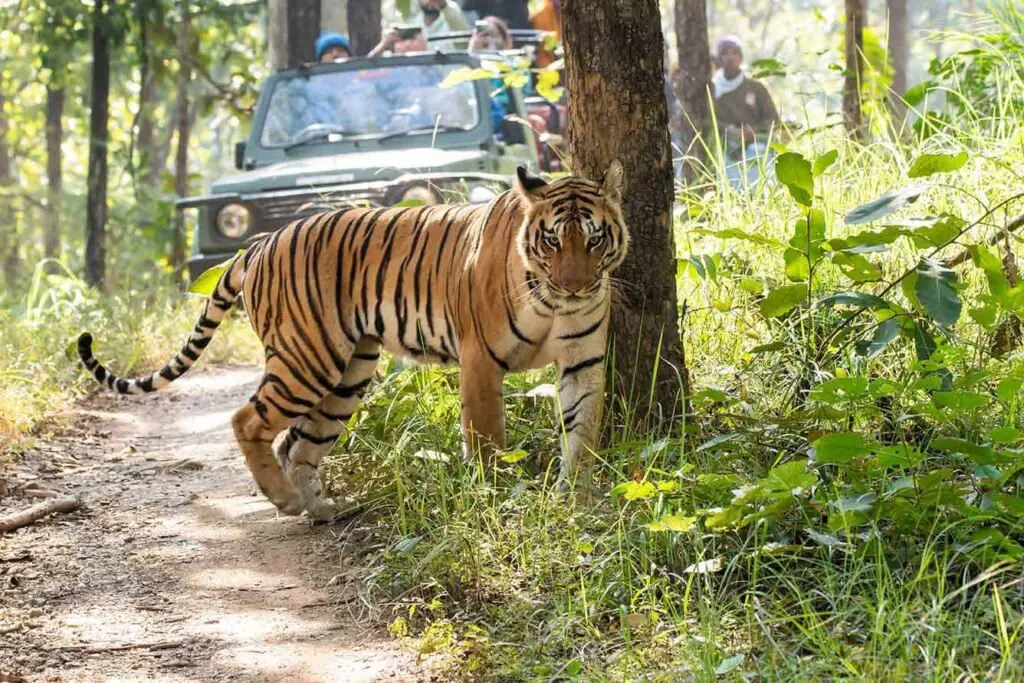DEERs OF DUDHWA NATIONAL PARK
Dudhwa National Park, also known as Dudhwa Tiger Reserve or Dudhwa Rashtriya Udyan, is a haven for many species of wildlife, including a wide variety of deer. Located in Uttar Pradesh, this national park is home to several unique species of deer that thrive in its dense forests, grasslands, and wetlands. For wildlife enthusiasts, Dudhwa offers an excellent opportunity to observe these majestic animals in their natural habitat.
Deer are essential to the ecosystem of Dudhwa National Park, as they support predator populations like tigers and leopards. Observing them not only adds to the wildlife experience but also provides insights into the balance of this rich ecosystem.
SPECIES OF DEER IN DUDHWA NATIONAL PARK
The park is home to several notable species of deer, each with unique characteristics and behaviors. The following table outlines the main species of deer in Dudhwa National Park.
| Deer Species | Description |
|---|---|
| Swamp Deer (Barasingha) | Known for its impressive antlers, which have 12 points; swamp deer is Dudhwa’s pride and is mostly found in the grasslands and wetlands. |
| Spotted Deer (Chital) | Recognizable by its white spots; chitals are social animals often seen in herds, and they play a significant role in the park’s food chain. |
| Barking Deer | Smaller in size with a distinct alarm call resembling a bark; they are often found alone or in pairs and are shy compared to other species. |
| Sambar Deer | The largest deer in the park, known for its dark brown coat and large antlers; they are commonly found near water sources and dense forests. |
SWAMP DEER (BARASINGHA)
The swamp deer, or barasingha, is one of the most distinctive animals in Dudhwa National Park. Known for its large, 12-pointed antlers, this deer is often spotted grazing in the grasslands and marshy areas of Dudhwa. Due to habitat protection efforts, the population of swamp deer has been well-preserved in the park. These deer are essential to Dudhwa, as they support the tiger population by serving as a primary food source.
Key Characteristics:
- Habitat: Wetlands and grasslands
- Group Behavior: Often found in herds
- Size: Large, with impressive antlers
SPOTTED DEER (CHITAL)
The spotted deer, also known as chital, is one of the most common deer species in Dudhwa Rashtriya Udyan. With its distinctive white spots on a light brown coat, the chital is easily recognizable. They are social animals, typically seen in herds. Chitals are highly alert, and their keen senses help them avoid predators. They are often spotted near water sources and open grasslands, where they graze on grasses and fruits.
Key Characteristics:
- Habitat: Grasslands, near water bodies
- Group Behavior: Herding species, often in large numbers
- Size: Medium-sized, with spotted coats
BARKING DEER
The barking deer, also known as muntjac, is smaller than other deer species in Dudhwa. Named for its unique, bark-like alarm call, this deer is a cautious animal and is often seen alone or in pairs. Barking deer prefer dense forests and are usually spotted near forest edges. Because of their shy nature, they are less frequently seen compared to other deer in Dudhwa Tiger Reserve.
Key Characteristics:
- Habitat: Dense forests and forest edges
- Group Behavior: Solitary or in pairs
- Size: Small with a reddish-brown coat
SAMBAR DEER
The sambar deer is the largest deer species found in Dudhwa National Park. With a robust build and dark brown coat, the sambar deer is often found near water sources and dense forest areas. This deer is a primary food source for tigers, making it an important part of the ecosystem. Sambar deer are typically seen in small groups, though males often roam alone. They are known for their loud alarm call, which alerts other animals to potential dangers.
Key Characteristics:
- Habitat: Dense forests and water sources
- Group Behavior: Small groups, solitary males
- Size: Large, with thick antlers
BEST TIME TO SEE DEER IN DUDHWA NATIONAL PARK
The best time to observe the deer species of Dudhwa is during the cooler months from November to April. This season allows for better wildlife sightings, as animals are more active and visible. The weather is also favorable, making it easier to enjoy safaris and outdoor exploration.
TIPS FOR SPOTTING DEER IN DUDHWA
- Go Early: Early morning safaris increase your chances of spotting deer, as they are more active during this time.
- Use Binoculars: Some species, like the barking deer, are shy and may stay hidden in the forest. Binoculars help observe them from a distance.
- Stay Quiet: Deer are sensitive to sounds, so avoid loud noises to prevent scaring them away.
- Opt for Guided Tours: Knowledgeable guides can help spot deer in hidden areas and provide more insights into their behavior.
- Observe Water Sources: Many deer species gather near water bodies, especially during dry seasons, making these spots ideal for sightings.
IMPORTANCE OF DEER IN DUDHWA TIGER RESERVE
Deer are an essential part of the Dudhwa ecosystem. They are primary prey for predators like tigers and leopards, helping to sustain the food chain. The presence of healthy deer populations is also a positive indicator of the park’s overall health, as they rely on diverse vegetation and water sources. Additionally, deer help disperse seeds and contribute to forest regeneration, playing a crucial role in maintaining the park’s biodiversity.
In conclusion, Dudhwa National Park is a wonderful place to observe various deer species in their natural surroundings. From the majestic swamp deer to the graceful chital, each species adds to the beauty and balance of this unique habitat. By following respectful and quiet safari practices, visitors can enjoy the sights and sounds of these incredible animals while contributing to the conservation efforts of Dudhwa Rashtriya Udyan.


